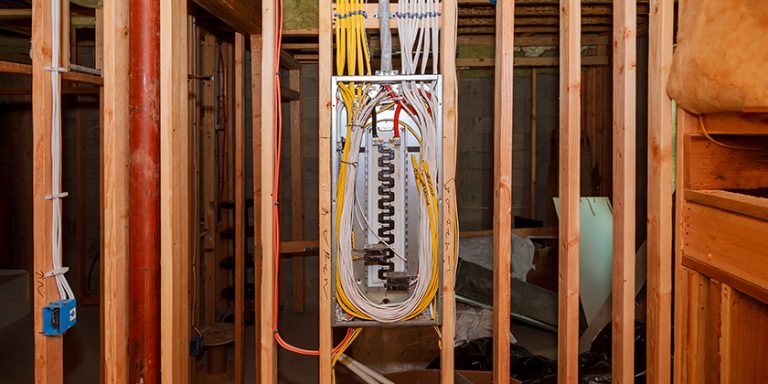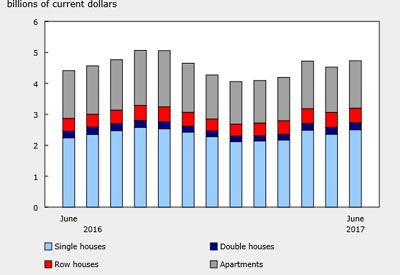Building a Greener Future – BuildForce Canada Report

May 3, 2024
Retrofitting Canada’s residential, commercial, and institutional building stock to incorporate sustainable fuel sources, technologies, and materials could require as many as 57,000 additional construction workers and generate more than $81 billion in new construction investments by 2032.
A new report prepared by BuildForce Canada, Building a Greener Future: Estimating the impact on construction labour demands from transitioning buildings in Canada away from fossil fuels, considers the implications of retrofitting existing buildings to improve their energy efficiency and reduce their carbon footprints in support of the Government of Canada’s goals to achieve net-zero greenhouse gas emissions by 2050. This is occurring at a time when construction labour markets have been operating at, or near, full capacity in many regions of the country.
The report was developed with input from an industry Steering Committee consisting of representatives from the Canadian Home Builders’ Association, ClimateCare, the Heating, Refrigeration and Air Conditioning Institute of Canada, the Mechanical Contractors Association of Canada, and Reliance Home Comfort. It models a scenario in which two types of green-building activities are performed: converting space and water heating equipment from fossil fuels to electric power sources, and retrofitting buildings to improve energy efficiency and minimize heat loss. It finds that as many as 16,300 new jobs relating to fuel switching could be created in the residential sector alone, while a further 40,600 may be created to perform energy-efficiency retrofits. More labour will be required to accommodate the conversion of, and renovations to, Canada’s stock of commercial and institutional buildings, although data to support modeling the impact of these conversions was not available for this iteration of this report.
Data from Natural Resources Canada show that buildings account for 13% of total greenhouse gas emissions in the country. More than three-quarters of those emissions come from the fuel sources used to power space and water heating equipment. Retrofitting these buildings to improve their energy efficiency and reduce their carbon footprint has therefore become an important component of Canada’s strategy to mitigate climate change.
“Addressing this transition will be a huge undertaking for Canada’s construction and building retrofit sector, but it will create a significant number of new employment opportunities among several trades, most notably heating, refrigeration and air conditioning mechanics,” says Martin Luymes, Vice President, Government and Stakeholder Relations at the Heating, Refrigeration and Air Conditioning Institute of Canada.
“The challenge for the construction sector is that this transition is being considered at a time when non-residential construction demands are already reporting peak or near-peak levels in many provinces, and when the residential construction sector is confronted with the additional challenge of building millions of new housing units to address Canada’s housing crisis,” says Tania Johnston, Chief Executive Officer of the Mechanical Contractors Association of Canada.
Building a Greener Future also models the implications of the green-building transition across the provinces. It finds that the impacts of fuel-switching could be comparatively lower in Quebec and the Atlantic provinces, where a large proportion of homes are already equipped with electric-powered heating equipment. However, many homes in the Atlantic provinces may require extensive retrofits to bolster energy efficiency.
In Ontario and the Prairie provinces, a high percentage of homes rely on space and water heaters that are powered by fossil fuels such as natural gas, heating oil, coal, and propane. Demand for skilled workers to perform fuel switching will therefore be high in many of these provinces. This is in addition to the requirements for additional workers to carry out energy-efficiency retrofits on many older homes to reduce heat loss and therefore minimize the draw on electricity infrastructure.
“Fuel switching is the quickest and most effective way to reduce greenhouse gas emissions in Canada’s building stock,” says Victor Hyman, Executive Director of ClimateCare Canada. “And with approximately 60% of homes in the country heated by fossil-fuels, this transition creates a significant opportunity for change.”
Although the level of effort required to transition Canada’s stock of commercial and institutional buildings could not be completely assessed for this report, BuildForce estimates that the change will create significant demands for non-residential workers. A significant portion of the space and water heating units installed in these buildings is currently powered by fossil fuels.
“While retrofitting Canada’s buildings is a top priority for achieving a greener future, it will not be without challenges,” says Kevin Lee, Chief Executive Officer of the Canadian Home Builders’ Association. “Achieving the targets set by the Government of Canada will require a significant increase in both consumer incentives and support programs, the cost competitiveness of these alternative solutions, and then on top of that, the additional workforce required to carry out these transition projects. The scenario also necessarily assumes that there would be sufficient power generation and grid capacity to heat Canada’s housing stock, which there currently is not, and which would require significant investment to create. This study still gives a sense of the magnitude of the challenge and points to important hurdles to be overcome in pursuit of these goals.”
This report was produced with the support and input of a variety of stakeholders from across the construction sector, and was funded in part by the Government of Canada’s Sectoral Workforce Solutions Program.
















